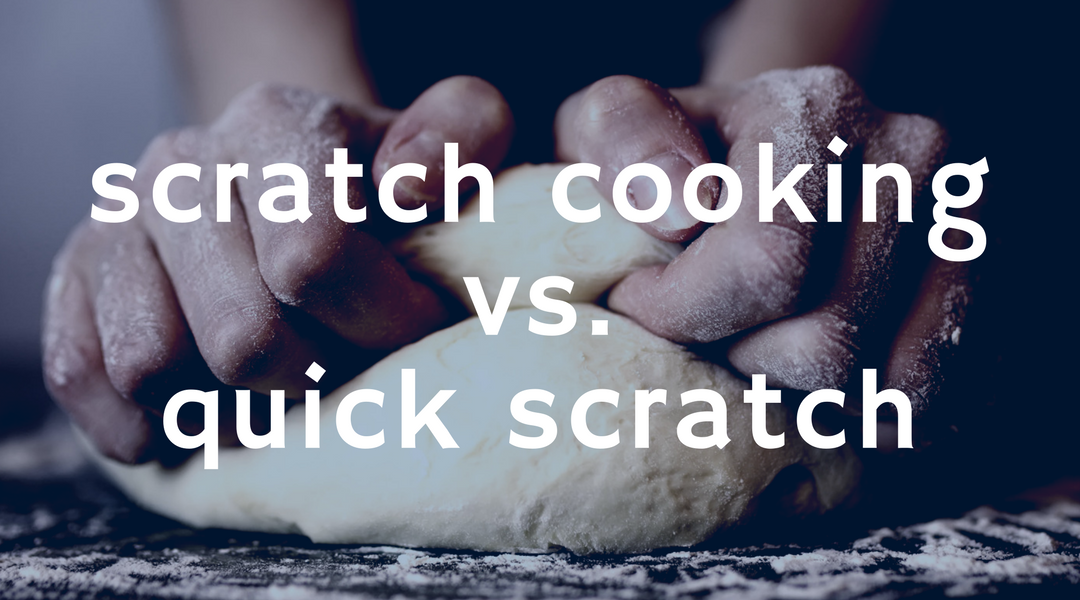We sat down with Founder and President of Health-e Pro, Meg Chesley, to discuss some of her time as a Food Service Director. Our conversation covered scratch cooking and quick-scratch cooking and ways districts could incorporate each for their program. If you’re looking for some new or interesting ideas for your School Nutrition program, this Q&A is for you:
What are some upsides and downsides to scratch cooking in schools?
There’s a belief system that scratch is higher quality, healthier, and tastes better–which may or may not be true–and a lot of our culture’s belief systems are that scratch equals fresher. All of those things–healthier, tastier, fresher–are things that anybody in the food service industry wants to portray, but it’s only as good as the cooks in the kitchen and the recipes that go with it.
But there are some limitations to it: I’ve worked in some school kitchens that are smaller than my office. Trying to put 400 meals out from scratch in a 10×10 box doesn’t work. Another major reason it isn’t done is the cost for human labor. Another big downside: with HACCP, Hazard Analysis Critical Control Point, which is a food safety program, there are very rigid standards when you’re cooking from raw that you get to bypass if you’re bringing something in that’s pre-cooked. If you’re cooking ground beef from scratch, for example, it’s a very different process to follow than if I’m bringing in a hamburger that’s already cooked. I may not be able to get the same quality of product if I scratch cook it.
Tell us more about quick-scratch cooking.
Quick scratch is when you’re making some items from scratch along with using some pre-cooked products. Say you’re using ground beef that’s already cooked, but your sauce is made from scratch. We still maintain a lot of the benefits of scratch cooking, but now have reduced the amount of labor and time–finding a nice place in the middle.
If I were to advise today, that’s an area I would advise School Nutrition Directors to use more. What can you do in the middle with quick scratch, where you can reduce labor, but still have the perception and benefits of scratch?
You see it in larger metro areas where they have implemented what’s called cook chill. Cook chill technology uses blast freezers; they install this whole process to batch cook a bunch of food, they put it in sealed packaging, and then it goes into a blast chiller where it comes to the correct temperature in a certain amount of time. That’s what it was intended for, scratch cook my spaghetti sauce, but cool it down quickly to meet the HACCP requirements.
There’s an increase risk of food safety issues when you go to 100% scratch cooking because it’s difficult do everything the same day and keep it within safety limits.
What’s an example of that?
We used to serve hundreds of turkeys during the holiday season. But cooking turkeys and carving 100 of them in the same day is not realistic. And yet it was one of the most popular meals we did for years. We used to cook all those turkeys, and then our cooks would stand there and pick the turkey off those bones, then make a gravy to go over potatoes–it was always one of the most popular days. It was a fabulous dish, but horribly time intensive, and you can see the risk for compromised food. To get all the turkeys out of the oven, picked, and cooled in the amount of time required was challenging.
Some schools are able to do quite a bit of scratch cooking. What makes that possible?
There are any number of factors including the kind of prep kitchens they have, as well as their budget constraints (or lack of them). What Provo City Schools does is amazing. It’s because their director believes in it, and they’ve clearly worked out a model to make it happen. Just the time they spend garnishing and making everything beautiful impresses me. What they do is truly extraordinary. I have also heard of states that fully subsidize labor costs. That would really make a huge difference.
What else can you share about scratch cooking or quick-scratch that can help districts?
Here’s a huge value point, regardless of whether you’re using quick-scratch or baking anything from scratch: what you do on site is compelling because there’s generally a hood vent in the kitchen that vents to the outside, so then that gets vented to the entire campus. If you’re baking oatmeal cookies from scratch, it’s going into every classroom and all across campus. I always loved those days because it always smelled so good.
But it’s also true if you’re cooking broccoli. You have to choose your battles and be careful if you want them to come eat (oatmeal), or keep them away (broccoli). You have to think about those things because, ultimately, you’re marketing your program.

